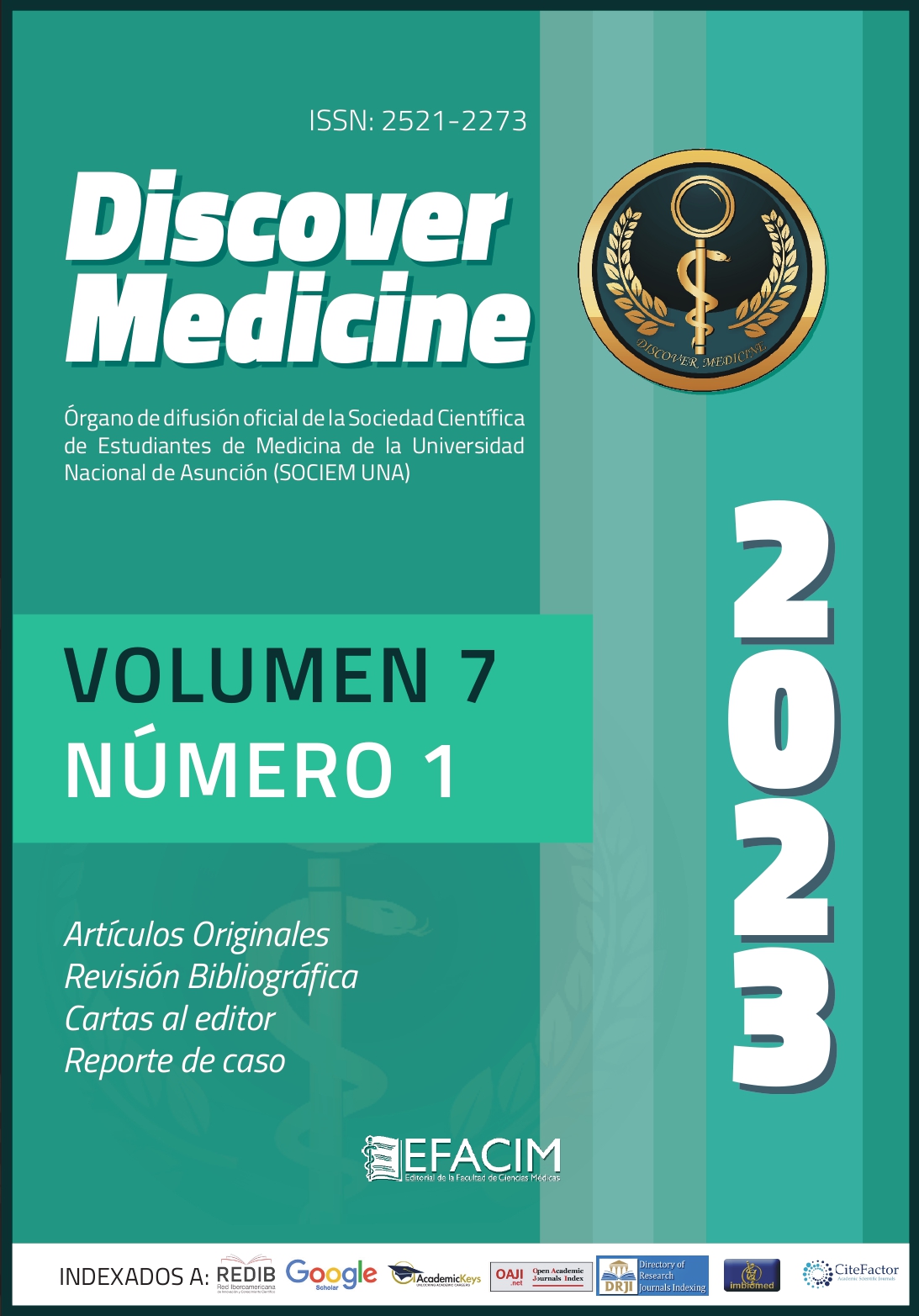Abstract
Introduction: A worrying situation has been the evolution registered by the increase in the number of people infected by the new coronavirus, whose initials COVID-19 obey the year in which it was discovered, in the city of Wuhan, China. In the Americas, most deaths from COVID-19 occurred in people 70 years of age or older, followed by people between 60 and 69 years of age. The elderly are a very vulnerable population.
Objective: To determine the nutritional status and characteristics of the diet in older adults of the Simeona Nursing Home after the covid pandemic during the months of August to September of the year 2022.
Methodology: Observational descriptive cross-sectional study in adults over 60 years of age, in whom a survey on sociodemographic data and nutritional status was applied through the Body Mass Index (BMI) according to parameters of the Pan American Health Organization (PAHO).
Results: The results of sociodemographic data showed that 53.33% of the studied population corresponded to the male sex and 46.67% to the female sex. Regarding the characteristics of the diet, 100% reported eating orally, regarding the results of the anthropometric assessment, the nutritional diagnosis that predominated was malnutrition (66.67%) according to BMI parameters (Pan American Health Organization). .
Conclusion: The Covid 19 pandemic constituted a challenge for all sectors of the health area, especially affecting people with underlying diseases and older adults. Malnutrition among the elderly of the Simeona home shows a high post-pandemic prevalence, the planning of nutritional strategies constitutes a fundamental pillar for resistance against complications and a decrease in morbidity and mortality in this especially vulnerable group.
References
Trilla A. Un mundo, una salud: la epidemia por el nuevo coronavirus COVID-19. Med Clin (Bar). 2020;154(5):175-77.
Solis CU.Coronavirus y enfermedades reumáticas, suposiciones, mitos y realidades. Rev Cub de Reu. 2020;22(2):1-6.
Vega Rivero JA, Ruvalcaba Ledezma JC , Hernández Pacheco I, Acuña Gurrola MR, López Pontigo L. La salud de las personas adultas mayores durante la pandemia de COVID-19. JONNPR. 2020;5(7):726-39.
Organización Mundial de la Salud. Organización Panamericana de la Salud. [citado 20 abril 2021]. Disponible en: https://www.paho.org/es/noticias/30-9-2020-personas-mayores-60-anos-han-sido-mas-afectadas-por-covid-19-americas
Ministerio de Salud Pública y Bienestar Social. [citado 20 abril 2021]. Disponible en: https://www.lanacion.com.py/pais/2020/12/08/mayor-letalidad-por-covid-19-en-paraguay-se-da-en-mayores-de-80-anos/
Falconi D y cols. Nutrición y enfermedades crónicas no trasmisibles del adulto mayor del club mi esperanza del Establecimiento de Salud I-3, Corrales – Tumbes, 2020. [tesis]. Perú: Universidad Nacional de Tumbes;2020.
Organización Mundial de la Salud. Guía para las mediciones físicas (Step 2) Vigilancia STEPS de la OMS [Internet]. Switzerland; [citado 2 de octubre de 2022]. Disponible en: https://www.who.int/ncds/surveillance/steps/en/
Navarro E, Longo EN, González AF. Técnica dietoterápica. 3ª ed. Cap. 15. El plan de alimentación hiposódico. Ciudad Autónoma de Buenos Aires: El Ateneo,2019.
Olivares C. Disfagia en adulto mayor: revisión de la evidencia en el manejo de la disfagia en población geriátrica. Universidad de Chile. Santiago, 2016. Disponible en: https://repositorio.uchile.cl/bitstream/handle/2250/140955/Disfagia_en_Adulto_Mayor.pdf?sequence=1
D. Águila-Gordo,J.Martínez-delRio,M.Negreira-Caama, et al. Enfermedad cardiovascular tras infección por SARS-CoV-2 en pacientes ancianos. Resultados del seguimiento anual de una cohorte de supervivientes. Revista Española de Geriatría y Gerontología. 57(2022)100–104. Disponible en: https://www.elsevier.es/es-revista-revista-espanola-geriatria-gerontologia-124-pdf-S0211139X21001748
Rico M, Oliva D, Vega G. Envejecimiento: algunas teorías y consideraciones genéticas, epigenéticas y ambientales. 2018;56(55).
Troncoso Pantoja Claudia. Alimentación del adulto mayor según lugar de residencia. Horiz. Med. [Internet]. 2017 Jul [citado 2023 Ene 16] ; 17( 3 ): 58-64. Disponible en: http://www.scielo.org.pe/scielo.php?script=sci_arttext&pid=S1727-558X2017000300010&lng=es. http://dx.doi.org/10.24265/horizmed.2017.v17n3.10
Bermejo RV, Garcí IA, Galera DM, de las Heras Rodríguez M, Torramadé JP. Prevalencia de desnutrición en personas mayores institucionalizadas en España: Un análisis multicéntrico nacional. Nutr Hosp. 2015;31(3):1205–
Maguiña Vargas Ciro, Gastelo Acosta Rosy, Tequen Bernilla Arly. El nuevo Coronavirus y la pandemia del Covid-19. Rev Med Hered [Internet]. 2020 Abr [citado 2023 Ene 17] ; 31( 2 ): 125-131. Disponible en: http://www.scielo.org.pe/scielo.php?script=sci_arttext&pid=S1018-130X2020000200125&lng=es. http://dx.doi.org/10.20453/rmh.v31i2.3776
Velázquez-Alba M, Cabrer-Rosales MF, Irigoyen Camacho ME. Importancia de la nutrición en pacientes adultos mayores con infección por covid-19. Revista Facultad Nacional de Salud Pública. Universidad de Antioquia. Disponible en: https://doi.org/10.17533/udea.rfnsp.e344210
Plata Zambrano, S. Síndrome post-covid y su relación con el estado nutricional: una revisión de literatura. Pontificia Universidad Javeriana Facultad de Ciencias. Carrera de Nutrición y Dietética. Bogotá, d.c. 2022. Disponible en: https://mail.google.com/mail/u/0/#inbox/QgrcJHrjBRLDSnPvPGXxxrqMkTJGTcRbwtQ?projector=1&messagePartId=0.1
López, D., Posada, C. y Savino, P. 2022. Síndrome poscovid-19 y nutrición: una perspectiva de manejo. Medicina. 44, 1 (abr. 2022), 87–98. DOI:https://doi.org/10.56050/01205498.1664
Buitrago-Gómez N, Zambrano-Urbano J, Muñoz-Realpe J, Ocampo-Chaparro JM, Hernández-Arango C, Lesmes-Duque MC, et al. Prevalencia y factores asociados con infección por covid-19 en adultos mayores institucionalizados. Duazary. 2022abril; 19(2): 116-128. Doi: https://doi.org/10.21676/2389783X.4691
Yang J, Zheng Y, Gou X, Pu K, Chen Z, Guo Q, Ji R, Wang H, Wang Y, Zhou Y. Prevalence of comorbidities and its effects in patients infected with SARS-CoV-2: a systematic review and meta-analysis. Int J Infect Dis. 2020 May;94:91-95. doi: 10.1016/j.ijid.2020.03.017. Epub 2020 Mar 12. PMID: 32173574; PMCID: PMC7194638.
Idacochea I. Estado nutricional y hematológico post covid 19 en adultos mayores. FIPCAEC (Edición. 32) Vol. 7, No 4, Octubre-Diciembre2022, pp. 1417-1435, ISSN: 2588-090X Doi: https://doi.org/10.23857/fipcaec.v7i4
Aranda Rubio Y, Cuesta Castellón G, Neira Martín B, Gómez-Pavón FJ. Disgeusia post-COVID-19: nueva causa de negativa a la ingesta en el paciente anciano [Post-COVID-19 dysgeusia: New refusal to eat in elderly patients]. Rev Esp Geriatr Gerontol. 2022 Jan-Feb;57(1):57-58. Spanish. doi: 10.1016/j.regg.2021.05.008. Epub 2021 May 24. PMID: 34315615; PMCID: PMC8141694.

This work is licensed under a Creative Commons Attribution-NonCommercial-NoDerivatives 4.0 International License.
Copyright (c) 2023 Johana Vanessa Meza Paredes, Lourdes Alicia Ortiz Soria, Araceli Olmedo Pavón

